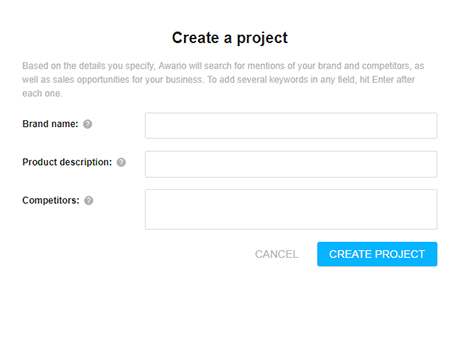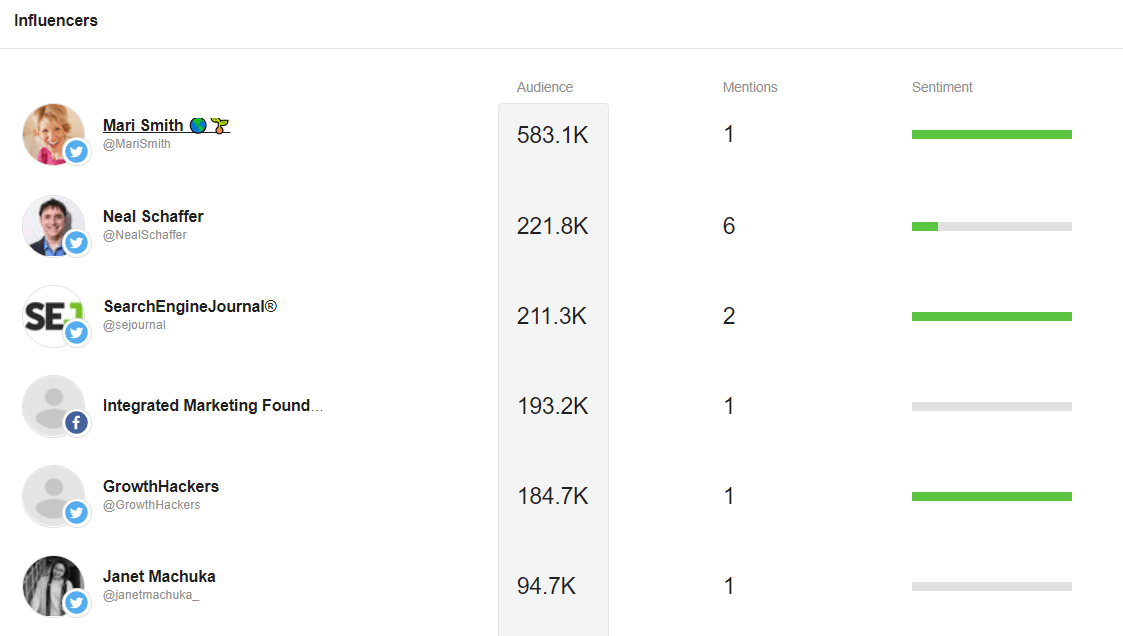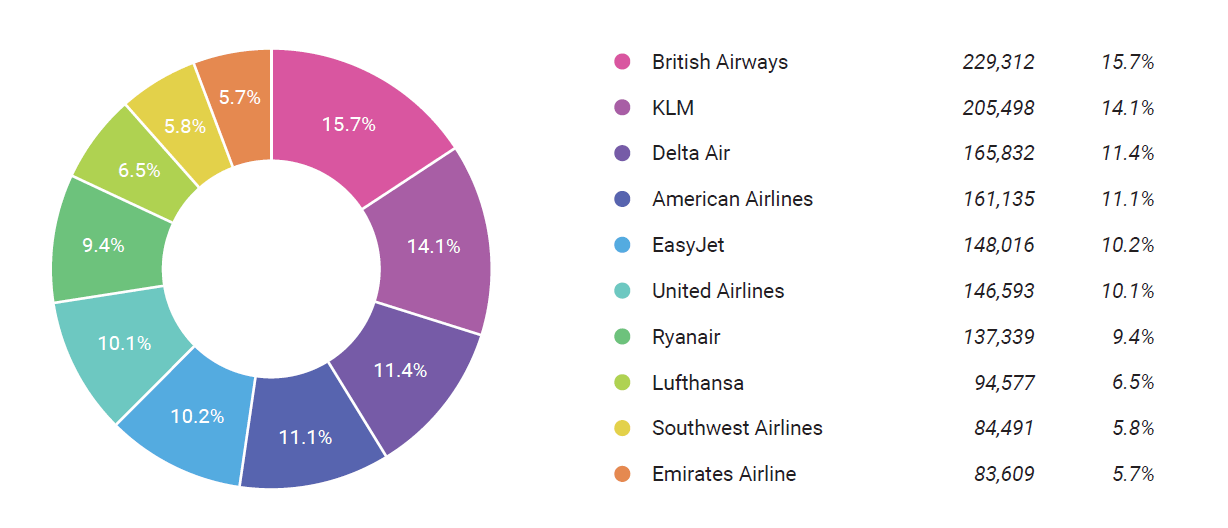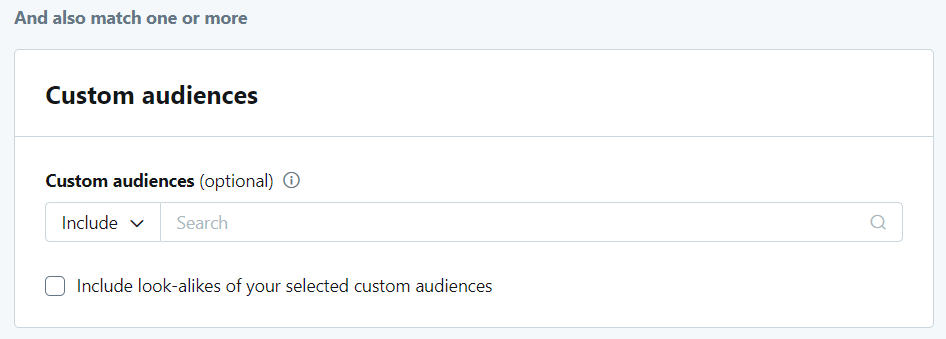7 unexpected ways social listening can help your business

If you regularly read marketing guides, tips, and inspiring interviews, you know that the main things all of them say is "be creative".
In most cases, this sounds intimidating at best.
How does one get creative on purpose? How does one stand out from the crowd and do something different just because they decided to? Doesn't talent and inspiration play the main role here?
This depends on how you look at creativity. When it comes to marketing, creativity doesn't necessarily mean crafting an ad that's weird, puzzling, controversial, or not unlike any other ads (although of course, this can help). It can also mean using familiar methods in new unexpected ways.
And today we'll discuss how one can do this with social listening.
What is social listening?
Social listening (or social media monitoring) is a method that uses a tool to crawl social media platforms, news sites, blogs, and forums to find mentions of any keyword (usually, the keyword is your brand, CEO, or product). Most often, companies use this method to gather big data that reveals the level of their brand awareness, brand reputation, and the results of marketing campaigns. Occasionally, companies use social listening to improve their customer service by making sure they catch all comments and complaints about their product.
But there are other ways social listening can help your business. And to know them, you have to get creative (or just read this guide).
By signing up I agree to the Terms of Use and Privacy Policy
7 unexpected ways social listening can help your business
1. Lead generation
Lead generation is one of the most important and one of the hardest tasks every marketer has to do. Lead generation is a field where you have to think outside of the box all the time, simply because everyone is after leads and everyone is constantly doing the same thing. Your competitors create Google Ads, use SEO tools, make social media ads, and ultimately all fight for the same spot in rankings, as well as for the same social media followers and email subscribers.
So what can you do differently?
There are a couple of social listening methods that might help you and your business find new ways to attract customers.
With social listening, you can find people on social media who are already looking for a product or service like yours. Plenty of people turn to social media when they need something. This makes sense: out of hundreds of your contacts on any social network, there will likely be someone who knows where to get the best haircut, buy a rare house plant, or organize a wedding.
Can anyone recommend any mindfulness or self help books? I am determined to get back to my old, peppy self ?? one step at a time!
— Jessica Swain (@_MissSwain) January 11, 2021
Your task as a marketer is to find these people - the ones who actively ask for this information from their followers. If you have a social listening tool, simply come up with keywords that describe your product or service best (e.g., "wedding planner", "wedding organizer"), come up with keywords that signify search intent ("looking for", "can anyone recommend"), and specify your language and location (if required).
In Awario, this feature is simplified. Awario Leads finds hot leads for you after only asking you a couple of questions about your product.

After you find the leads, you can pitch your product as a brand representative or as a regular social media user. Both approaches have their risks and benefits. But in any case, you'll finally find people that are truly interested in what you have to offer and are genuinely looking to be sold to!
@AwarioApp because I can use it for so many different things (and not because I work there?)
— anna.bredava (@anna_bredava) June 19, 2019
2. Link Building
SEO is hard. You have to struggle for every spot on Google and always do more to make sure your competitors don't take it from you. And that's if you already have a good ranking. The amount of work you have to do to get there is incomprehensive. If you're looking to do more and have some hacks up your sleeve that your competitors lack, use social listening.
Social listening tools can find all mentions of your brand, product, feature, etc. online that don't contain links to your websites. Finding these unlinked mentions and turning them into links is a rather simple and quick way to get backlinks that are so valued in SEO.
To find all unlinked mentions of your brand you'll need the tool with the Boolean search option. Follow our Boolean search guide or watch the video below to learn the workflow.
3. Influencer Marketing
Influencer marketing is one of the most popular marketing methods these days, so there's nothing too creative about choosing to go with it.
However, the method you use for finding influencers matters.
In most cases, companies use influencer databases. There's nothing inherently wrong with this, but also there is no way you can find someone your competitors haven't considered. All of you are going through the same influencer lists.
With social listening tools, you can find brand advocates who've already mentioned your brand and you can find niche micro-influencers who don't have large enough followings for databases. Working with social media influencers with around 5000 will separate you from other brands as someone more niche and more trustworthy.
In Awario, you can find brand advocates by monitoring your brand and then checking out the Influencers tab.

You can find your industry's influencers by monitoring your niche. To discover micro-influencers, filter out the follower range you want your influencer to have.

4. Share of Voice
Before, we talked about how social listening can help you achieve your marketing goals with unorthodox methods.
Here, we'll talk about something entirely different - how social listening can help you understand your market share by calculating your and your competitors' shares of voice.
Market share is a metric that is never entirely obvious. Often, Share of Voice acts as a substitute metric or one of the metrics that can constitute the final answer. Social listening compares the amount of conversation on social media and the rest of the web you and your main competitors cause. For example, the Share of Voice graph below shows the percentage of conversation online attributed to the biggest airline players:

To calculate your Share of Voice, you'll have to create alerts for all your direct competitors (you can add up to 15 in Awario) and let the tool gather the data before looking into analytics.
5. Creating better social media ads
There is a lot of analytics and A/B testing involved in creating ads. You know why: without this much work put into ads, they wouldn't work at all. And while you obviously do a lot already, I bet you're not satisfied with your conversions.
There is a way to improve your ads with social listening.
Social listening helps with finding the right audience for your ads. Different social media networks have different targeting options, and although some analytics is built in most of them, this is usually not enough. If you feel like the targeting options offered by a social media platform are not flexible and precise enough (I am looking at you, Twitter), you can use social listening to hand-craft your audience.
There are two ways you can create a tailored ad audience using social listening.
Let's take Twitter as a platform of choice.
1. Your tailored audience can consist of people who are looking for a product like yours. To find them, you'll need a social listening tool with a Boolean search option.
Create your query to include keywords that signal search intent and your product description, let Awario find these posts, export the authors as a CSV file from Awario, and import the accounts into Twitter using a CSV importer.
2. You can also find influencers using Awario in the same way we discussed earlier and use influencers' followers as a tailored target audience for a Twitter campaign.

6. Tracking and evaluating offline events
Again, this is a totally new way social listening can help your business. This time, by understanding offline marketing better.
We've discussed multiple times by now how people share everything on social media. This also includes offline events and offline campaigns that companies organize. By creating an alert for your event, you'll know what people are saying about it at every point of the event. You'll be able to spot any issues and reply to people's queries in real time. You'll know if something is going wrong instantly, and if everything is going right, you'll be there, behind your laptop, watching the reactions to the event or campaign.

When the event is over, you'll be able to measure the results. You'll know how many people have been reached, what was the overall sentiment, what were the topics most often discussed during the event.
If you have been monitoring your brand before and will you keep monitoring the brand after the event, you'll also know whether the event has affected the overall brand awareness, i.e. whether people now mention your brand more often compared to how they used to.
7. Recruiting talent
Social listening is rarely used for recruiting talent. But when it is, it can be very useful. Jobvite reported that 59% of recruiters rated candidates sourced through social media as “highest quality” and 21% of candidates said they found their dream job through social media.
Recruiting talent through social media can also become less expensive. While traditional job search sites charge on a post-per-click basis, with social media search, recruiters just use a social listening tool that the marketing department already has.
The most obvious platforms for searching for the right candidates are LinkedIn and Twitter. However, for some roles, it might make sense to also involve Pinterest and Facebook Groups in your search strategy.
Note: None of the social listening tools search Facebook groups, as it's not considered public information, so this will have to be done manually.
To look for the right people, create an alert in Awario that specifies the kind of candidate you're looking for. For example, you can create a query that contains keywords such as "graduate", "Java", "remote". You can also specify location and language, if necessary.
If you want to find all relevant resumes on job search websites in addition to social media results, add job search websites of choice (indeed.com, monster.com, glassdor.com, etc.) to Whitelist.
In addition, you can do some head hunting competitor research. Create alerts for your competitors' brands to discover where the competitors are recruiting, what positions they are recruiting for, and how long does it take them to close the vacancies.
Conclusion
In business as in life, it's never enough to copy what others are doing, follow the basic rules, and hope for the best. You have to go further, do something differently, use old methods in new ways.
Social listening is a great method to start doing exactly that. Hopefully, this article gave you a few ideas on how to achieve that. Don't stop at the tips given here, however. Get your team and brainstorm how you can do more.













